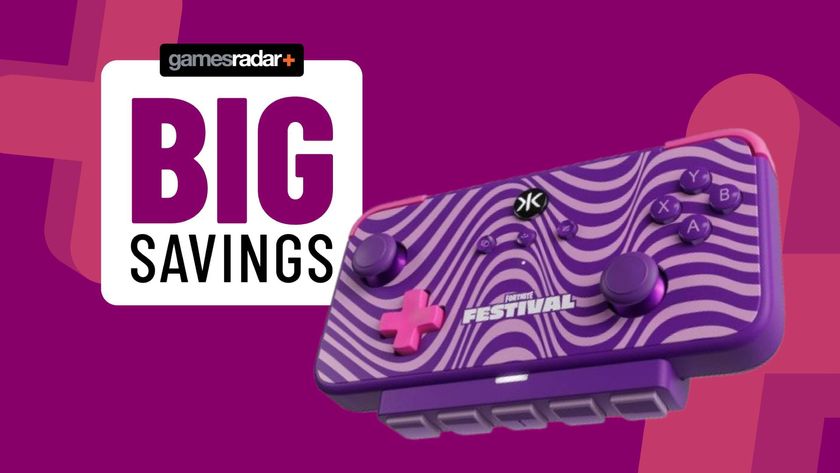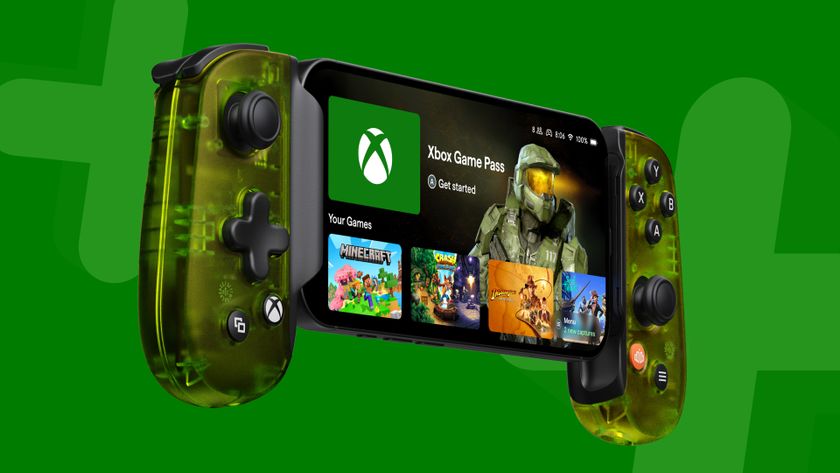The making of the accessible Xbox Adaptive Joystick and thumbstick toppers: "Any decision we have to make, we make the decision that creates more flexibility"
Preview | "Flexibility is really one of the hallmarks"
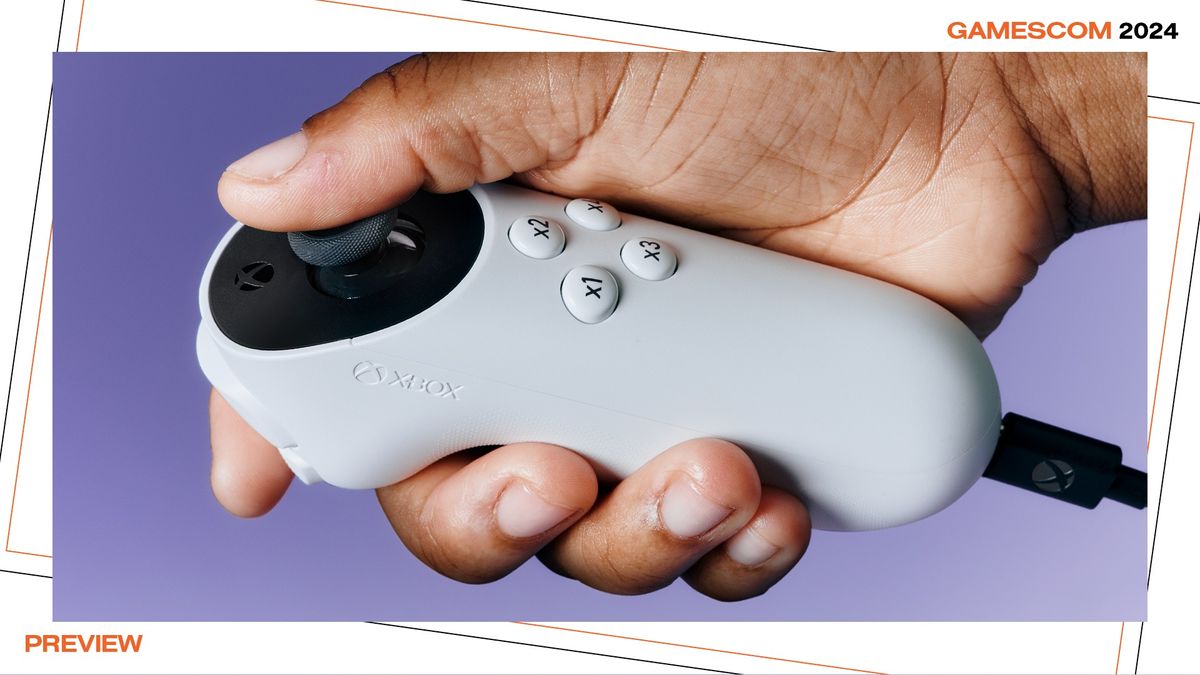
Last week, the Xbox Adaptive Joystick and adaptive thumbstick toppers were unveiled as part of Xbox's ongoing efforts to make gaming more accessible. Born in partnership with the disability community, the team at Xbox recognized a need to create a single adaptable Joystick that could be used alongside the Xbox Adaptive Controller. During a demo of the new hardware at Gamescom, principal designer Chris Kujawski says work initially began on the Joystick back in 2022. Landing on the size and shape, as well as the configuration of its buttons, was an iterative process, with Kujawski showing us a picture from the workshop in his garage where he began developing various prototypes.
With the chance to see the Adaptive Joystick up close and try it out playing Forza Horizon 5, I also get to see the new Adaptive thumbstick toppers. The toppers - which come in a variety of shapes that can be attached to the Xbox controller thumbsticks - will be available as 3D printable files on the Xbox Design Lab website. Hearing from Kujawski and senior accessibility product manager Kaitlyn Jones, it's clear that flexibility and affordability are key aspects that drove much of the collaborative design process.
"Flexibility is really one of the hallmarks of any of these products," Kujawski says, speaking of the various features of the Joystick. "Any decision we have to make, we make the decision that creates more flexibility."
Design
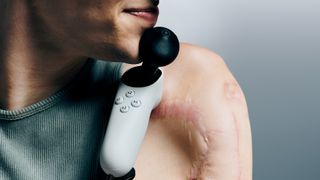
As Kujawski emphasizes, flexibility is integral to ensure an accessible controller can cater to as many different needs and setups as possible. The design decisions highlighted in the demo certainly reflect how the team strived to make it adaptable and affordable. One feature, for example, is the inclusion of a universal mount point, which was also added to the Xbox Adaptive controller. Not only was this done so that disabled players can mount the joystick to stabilize it to suit their needs, but it was also made universal to try to "work with any number of existing mounts" to fit into as many custom setups as possible.
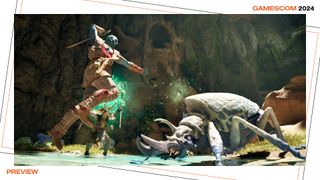
For more of our hands-on previews and exclusive interviews, visit our Gamescom 2024 coverage hub.
Making it more affordable "was a really important aspect," adds Kujawski, which is also partly why the Joystick is wired to both bring down the cost and again feed back into its adaptable nature. Rather than being hardwired, it comes with a removable wire that can easily be swapped out depending on the setup: "We ship with a two meter cable… you can plug it directly into the console," Kujawski says, "But if you're using an adaptive controller, and it's close to you, you don't necessarily need this cable and you can replace it with a shorter one, and really kind of tailor it, so again it's about creating choice and options to make it as flexible as possible."
The design was entirely driven by feedback, with the team visiting local hospitals and charitable organizations as they were prototyping: "We took a number of prototypes to a hospital in Seattle that uses gaming as therapy for spinal cord patients," Kujawski says. "We asked them, 'hey, what do you think was good? What's bad?'. Some stuff was good. Some stuff was bad. We learned a number of things in that visit, though, just from spending a few hours with them, one of which was the number of buttons on here [the Joystick]. So we have four buttons, and that was very intentionally thought through. We actually tried out a number of different configurations, single, two buttons, no buttons at all."
Feedback
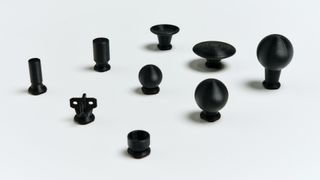
"We don't want to design or create products for players with disabilities, but rather, we create them with players with disabilities, because they're experts in their own needs and experiences."
Kaitlyn Jones
With four buttons on the front that can be mapped to any input or even unmapped if they aren't needed, the Joystick also has a trigger and bumper. But unlike the standard controller that has an analog trigger, the trigger on the Joystick pushes in like a button. When I try out Forza Horizon 5 using the controller, the bumper and trigger have been mapped to accelerate and reverse the car, but if you can't grip, for example, the mount functionality and mappable buttons give you other options. The accessibility of the Joystick also extends to the packaging, with an unfurling box that's been designed so that each component - from the wire to the controller – can be removed with ease.
Sign up to the 12DOVE Newsletter
Weekly digests, tales from the communities you love, and more
The idea behind 3D printing adaptive thumbstick toppers also came about after feedback, with many facing a barrier of cost when it comes to custom set ups: "Custom setups are really expensive," Kujawski adds. "Not everyone who lives near a hospital that can do that for them. Being able to be creative is a really big part of being a disabled player, and many times, it's a DIY situation, and so [the toppers are about] providing a means for someone who doesn't have the tools or expertise to create this semi-custom shape and implement it at home. 3D printers aren't free, but they are more prevalent than there were a few years ago. So it's a lot easier to have access to that, and providing that as a service was very intentional."
As Jones outlines, the thumbsticks toppers cover a range of the most common shapes needed for various setups, with Kujawski highlighting the plus sign topper as a personal favorite since it can be used with clay or molds to create a shape that's comfortable for the player. The Xbox Adaptive Joystick is set to release in early 2025 for $29.99, while the toppers are now available for printing on Design Labs.
It's great to see the arrival of more accessible hardware that continues to be developed in collaboration with the disability community: "We don't want to design or create products for players with disabilities," Jones says, "but rather, we create them with players with disabilities, because they're experts in their own needs and experiences."

I started out writing for the games section of a student-run website as an undergrad, and continued to write about games in my free time during retail and temp jobs for a number of years. Eventually, I earned an MA in magazine journalism at Cardiff University, and soon after got my first official role in the industry as a content editor for Stuff magazine. After writing about all things tech and games-related, I then did a brief stint as a freelancer before I landed my role as a staff writer here at 12DOVE. Now I get to write features, previews, and reviews, and when I'm not doing that, you can usually find me lost in any one of the Dragon Age or Mass Effect games, tucking into another delightful indie, or drinking far too much tea for my own good.
